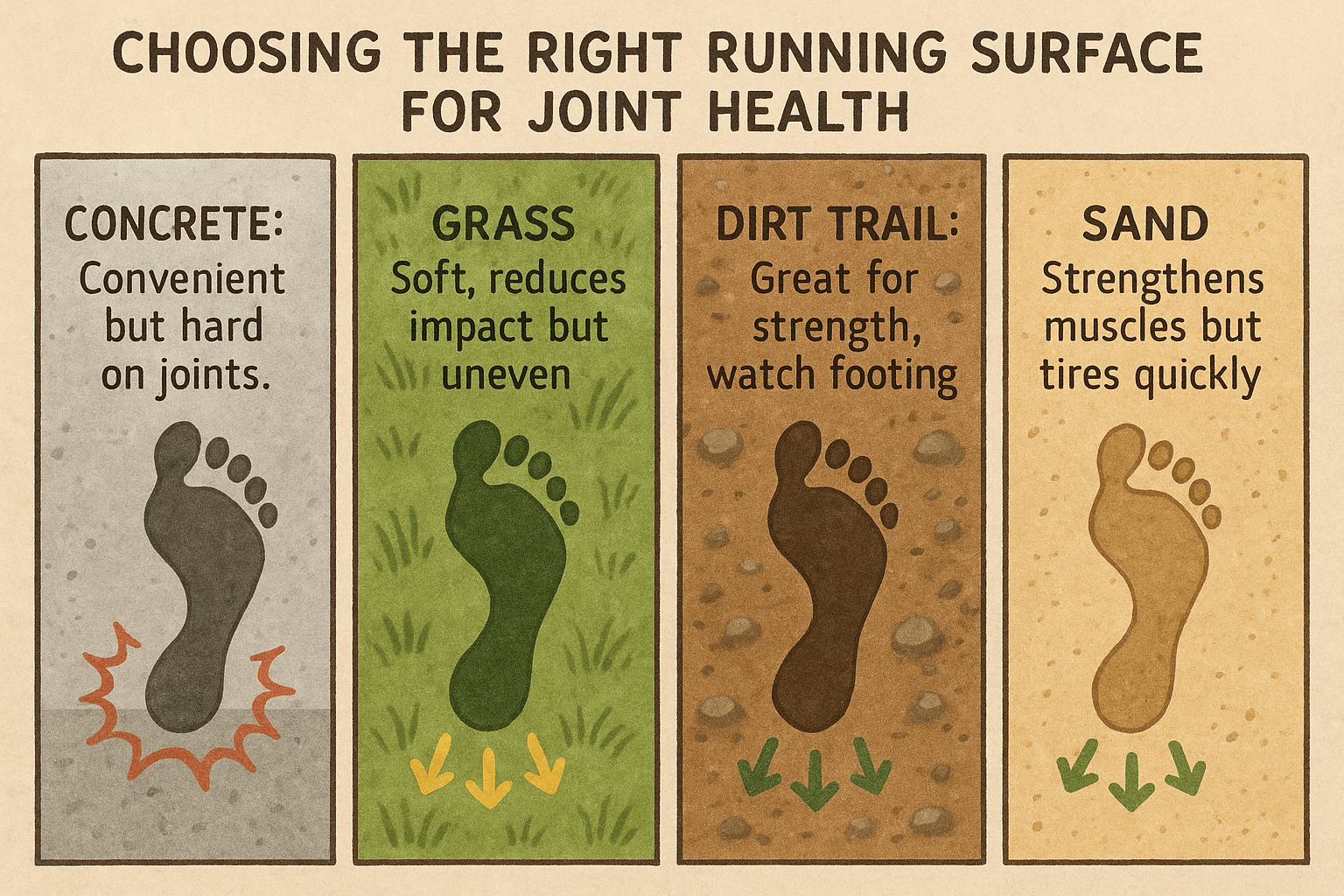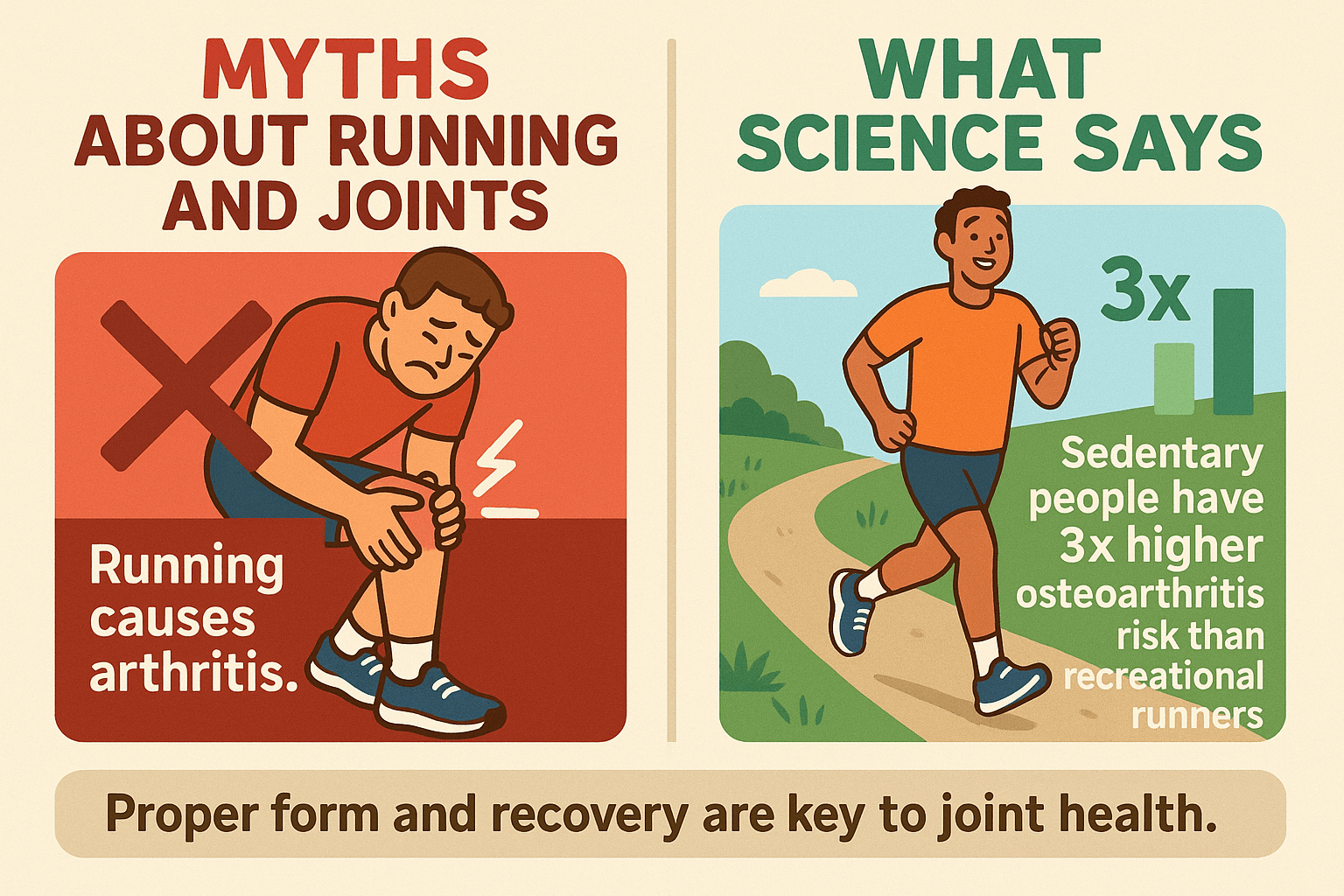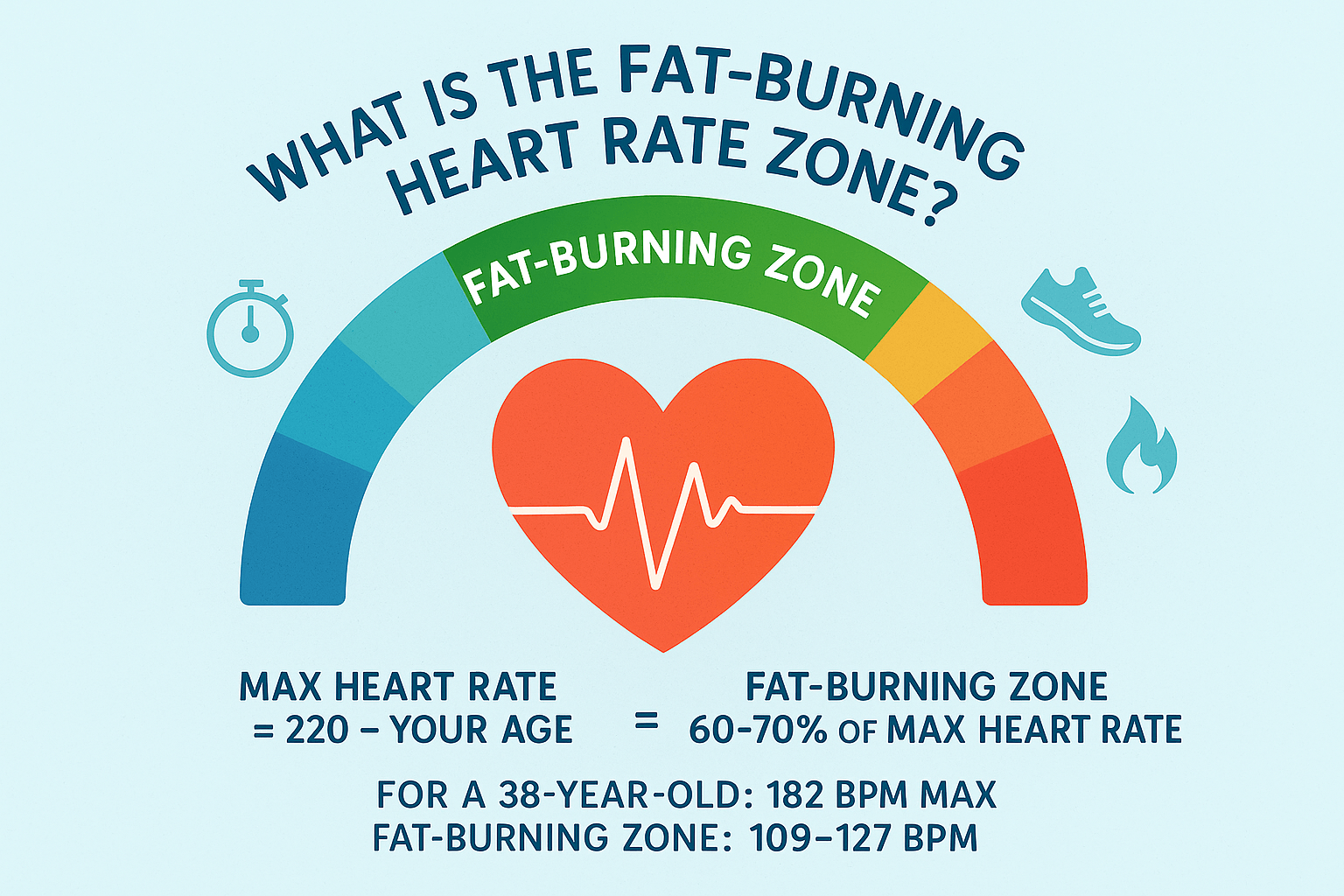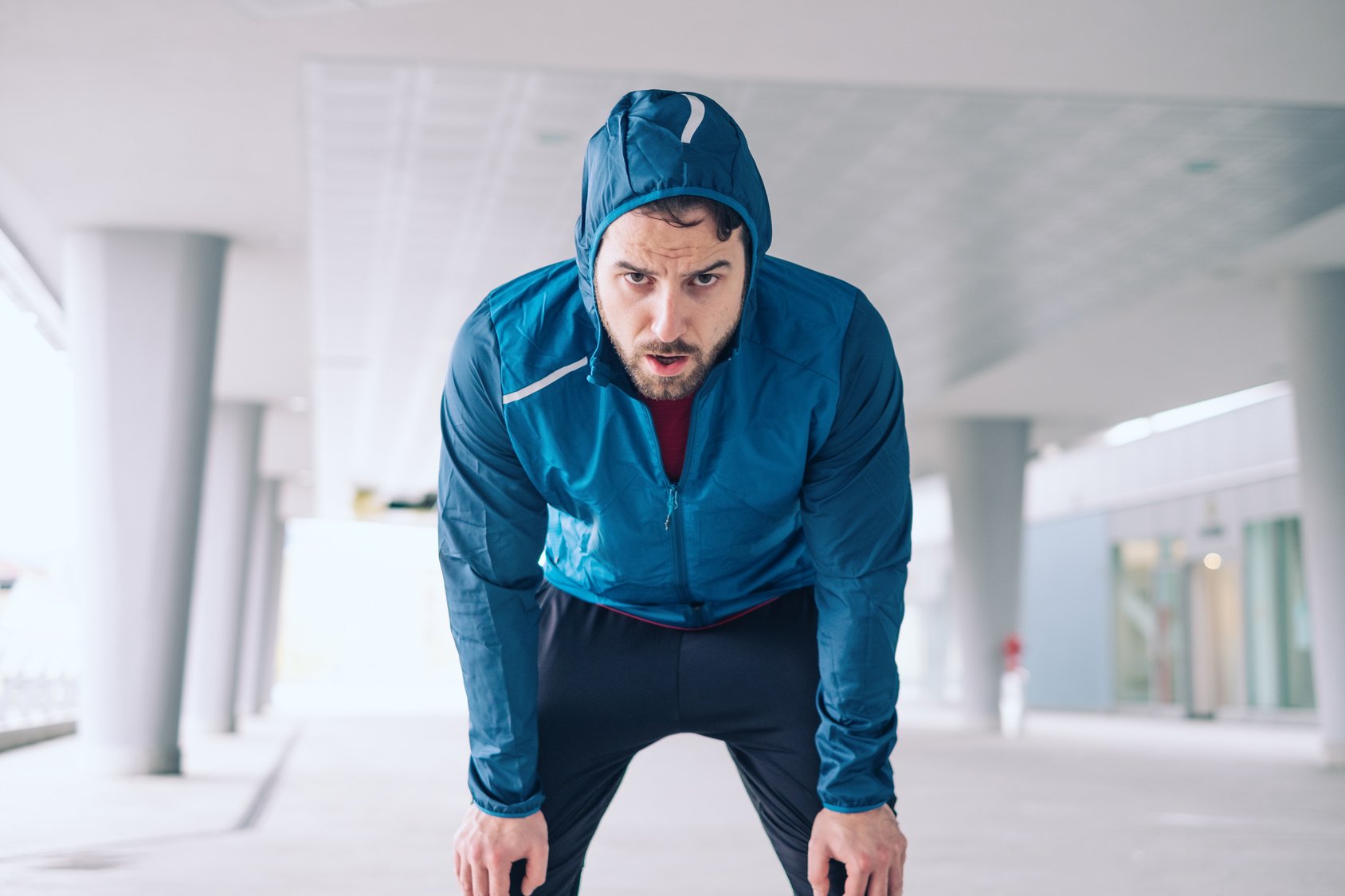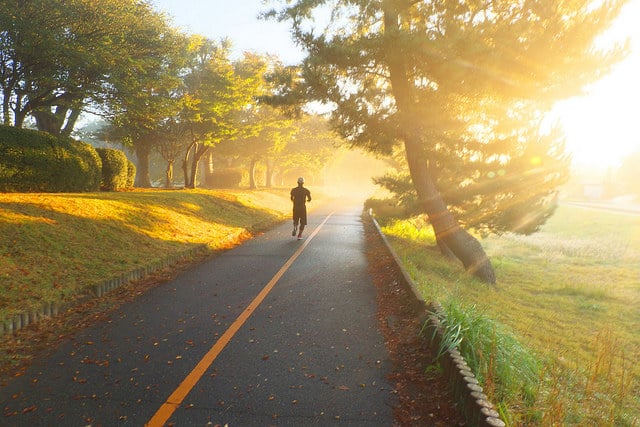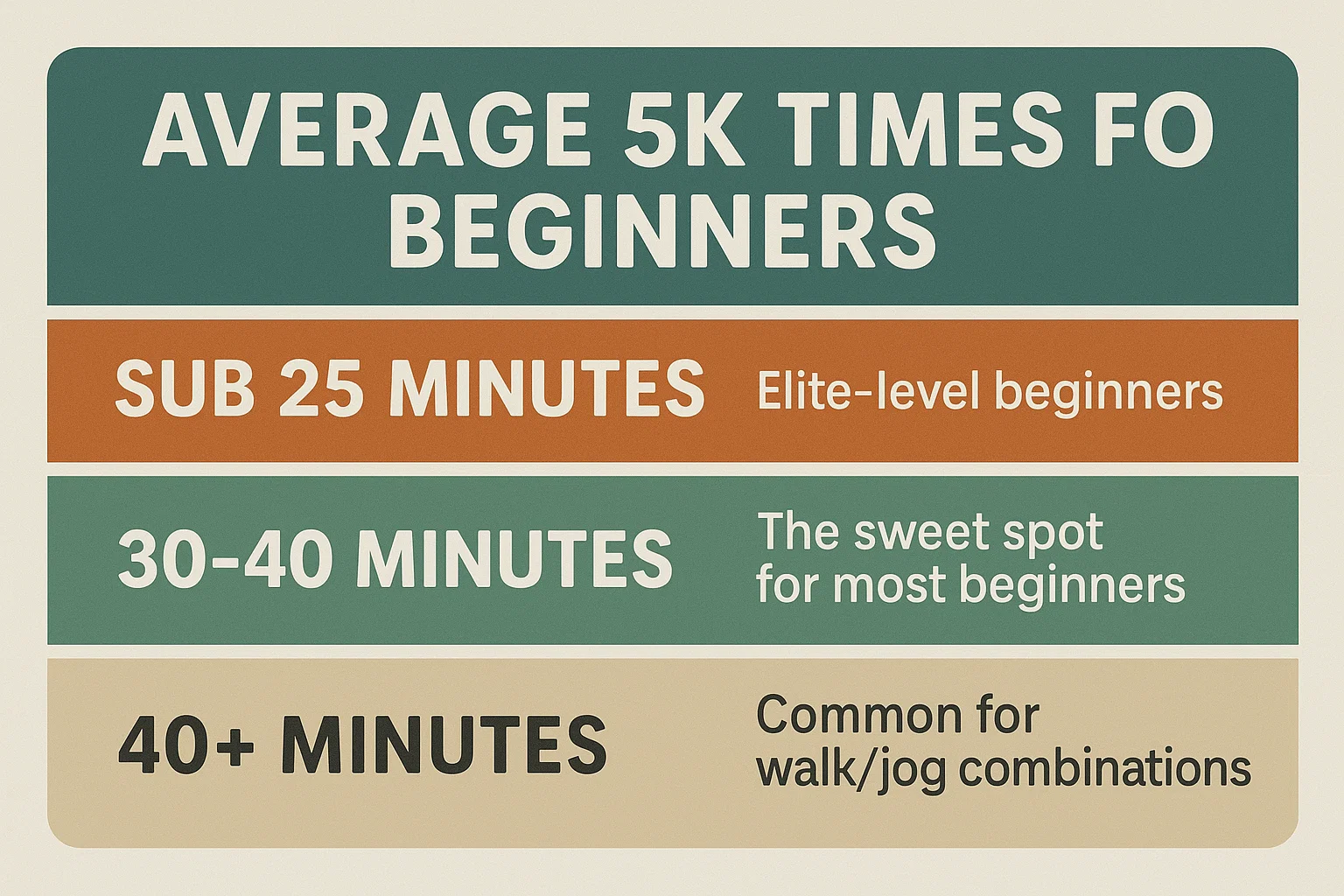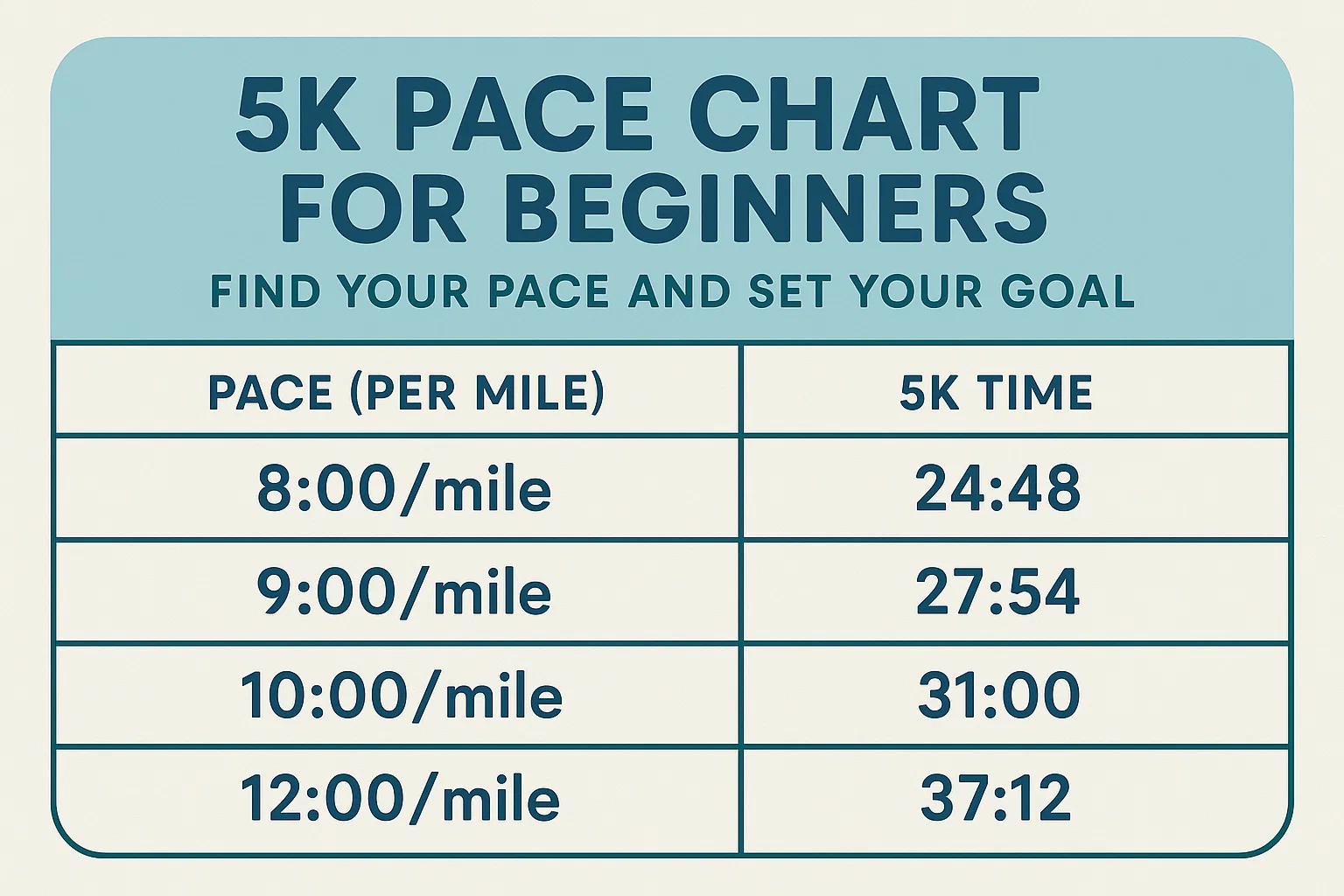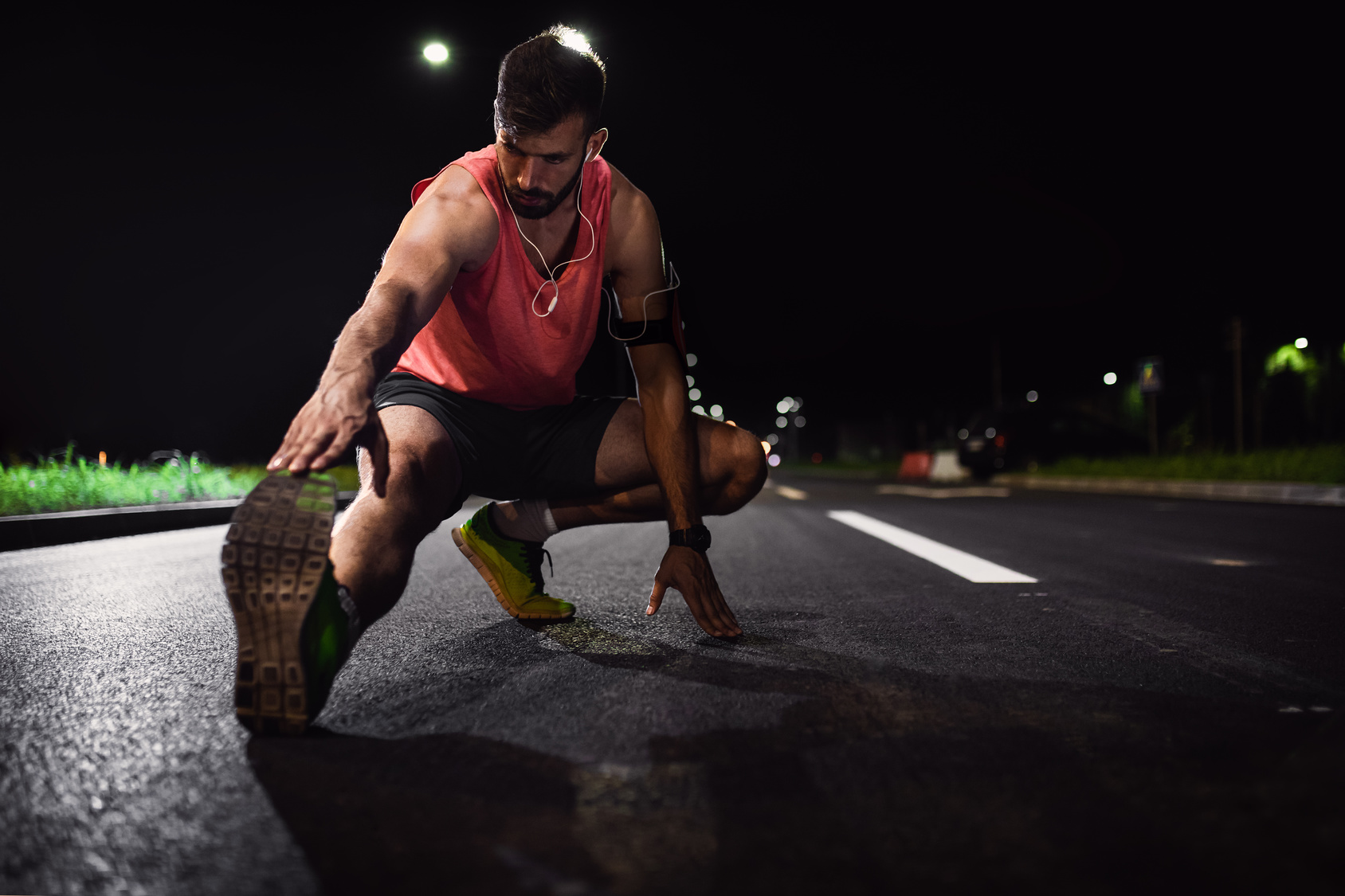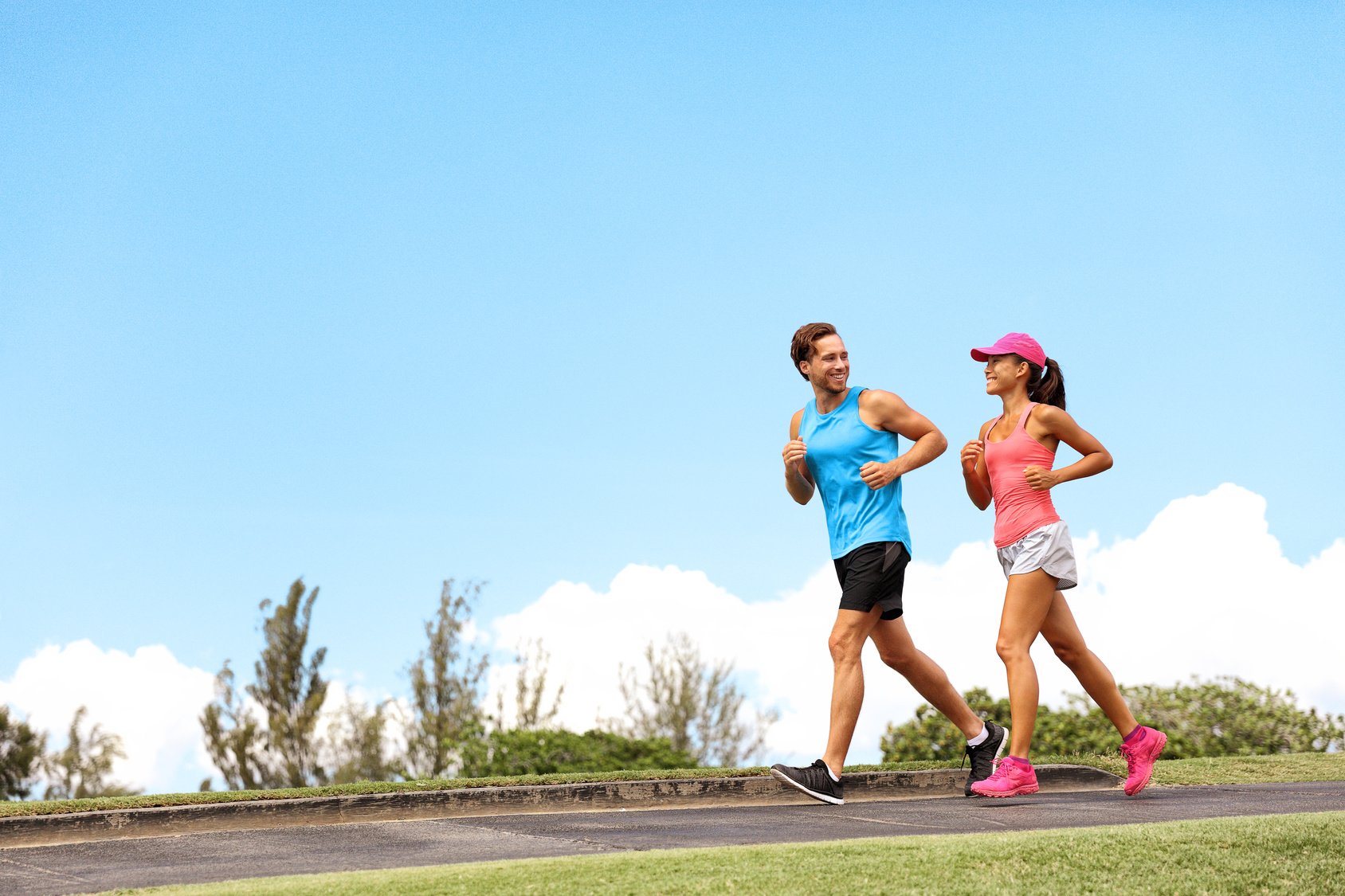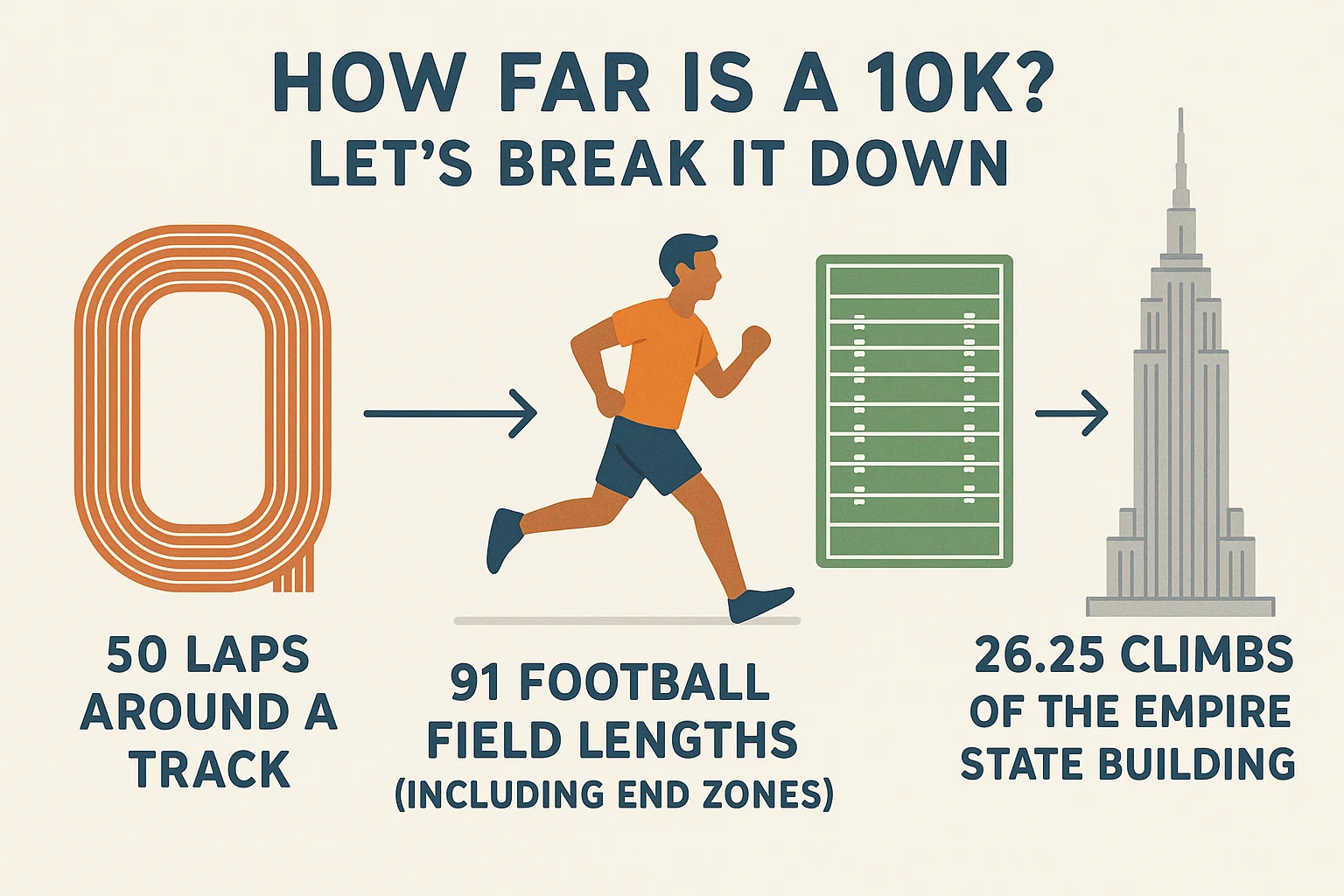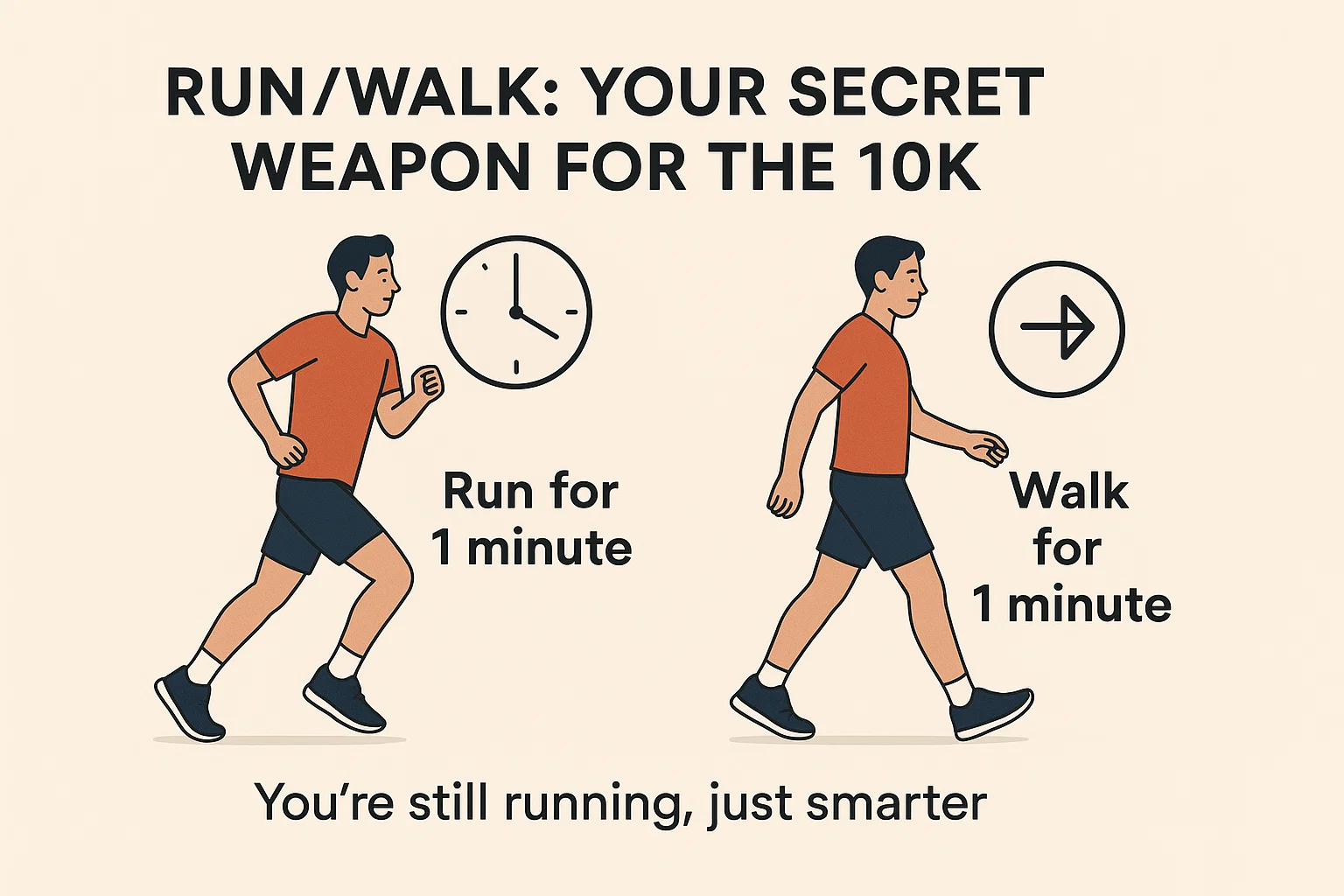Running at Night: Strange or Smart?
Let’s be real — running at night sounds weird to a lot of folks. I get it. The streets are quiet, it’s dark, and maybe your mom still tells you it’s not safe. But if you’ve ever laced up after sunset, you know the deal. There’s something different about it. Peaceful. Calming. Like the world hit the mute button and left the streets just for you.
I’ve had night runs that felt more like meditation than miles. Especially in the summer, when the heat’s been roasting all day long — trust me, after-dark running isn’t strange, it’s survival. In places where the sun fries the pavement by noon, going out at night isn’t just smart — it’s the only way to go.
But look — it’s not all moonlight and zen. Night runs come with risks. Low visibility, traffic, sketchy areas. And yeah, I’ve heard the horror stories — one runner I know got mugged in a lit-up park. “You can’t outrun a bullet,” they said. Brutal, but true. Even if you’re in a safe area, there’s still the question of energy. After a long day, do you really want to run?
The good news? With the right mindset and some simple precautions, running at night can be both safe and rewarding. I’ll walk you through it all — the good, the bad, and the stuff most people don’t talk about until something goes sideways. I’ll also throw in stories from runners who’ve learned things the hard way (myself included).
By the end, you’ll know if nighttime running is your next move — or if it’s something to leave for the werewolves. Let’s break it down.
Why Run at Night? The Real Benefits (Backed by Science and Street Smarts)
1. Night Runs Work When Life Doesn’t
Look, if you’ve got a full plate — job, kids, errands, a dog that refuses to chill — then squeezing in a run before the sun comes up feels like chasing unicorns. But once the chaos dies down? That’s your window.
I know a dad who gets the kids tucked in, throws on his gear during the bedtime story, and hits the pavement by 7:30pm. By 9, he’s back, cooled down, and still gets decent sleep. That’s the kind of hustle I respect.
And let’s be honest — running at night often means fewer people, fewer distractions, and more focus. You can crank out a few miles in peace without dodging strollers or waiting at crosswalks every 200 yards.
So if you’re tired of saying, “I just don’t have time to run,” this might be your fix.
Quick check-in: Are you struggling to fit in runs? Could evenings work better for your schedule?
2. Stress Sucks — But Running at Night Helps
Had one of those days? Brain fried? Boss annoying? Kids turned the living room into a war zone? Yeah, I’ve been there.
Instead of rage-scrolling or inhaling a bag of chips, throw on your shoes and go for an easy run. Seriously — it’s like therapy without the couch. A lot of runners, myself included, swear by night runs to burn off the mental junk that piles up during the day.
You’re not just running — you’re releasing. One runner I know calls it their “stress purge.” Another uses night runs to help with winter depression when the days feel way too short. The darkness becomes an escape — not something to fear, but something that clears the slate.
Pro tip: Don’t think of these runs as training. Think of them as healing.
Try this tonight: Take a slow jog instead of doom-scrolling. Notice how your mood shifts by mile 2.
3. Running at Night Can Help You Sleep (No Joke)
Here’s a myth that needs to die: “Exercising at night ruins your sleep.” Not always true.
The science actually says otherwise — if you keep the pace chill. Studies show that moderate evening exercise can help you fall asleep faster, stay asleep longer, and get deeper rest.
But there’s a catch — timing matters. You need to finish your run at least 90 minutes before bed so your body has time to cool off and unwind.
I learned this the hard way. A while back, I ran a brutal speed workout around 8pm — mile repeats, hard effort. I was buzzing with adrenaline until 1 in the morning. Not worth it.
These days? I save the speed for morning and use my night runs for easy effort, relaxed pace, and just letting go.
So yeah, nighttime runs can help your sleep — just don’t go all-out and then expect to crash instantly.
Runner-to-runner advice: Keep it easy at night. Save the grind for sunrise.
Your Body’s Built for Evening Miles
Let’s get one thing straight—your body? It’s not just some machine that runs the same 24/7. Nope. According to science (yeah, real-deal lab coats), your body actually performs better later in the day. We’re talking late afternoon to early evening, around 4 p.m. to 8 p.m., when your core body temperature peaks.
What’s that mean for you? Warmer muscles, faster reaction time, better blood flow—basically, your body’s firing on all cylinders. Less stiffness, more power. I’ve felt it myself: runs that felt like a grind at 6 a.m. flow like butter at 6 p.m.
And I’m not just making this up. The University of North Texas did a study on cyclists and found they could hold the same effort about 20% longer in the evening versus the morning. That’s huge. Not only that, their peak oxygen uptake and anaerobic capacity—both key to endurance—were better later in the day.
And runners? Same deal. I’ve coached folks who couldn’t crack an 8-minute mile before noon, but suddenly hit sub-7s in evening tempo runs. It’s not magic. It’s just your body being awake and ready.
Bonus: Warmer muscles = fewer injuries. Ever rolled out of bed and tried to run right away? Yeah, that creaky-joint Frankenstein jog isn’t doing you any favors. By evening, your joints are lubed up, muscles are warm, and coordination’s sharper—way less risk of pulling something or eating pavement.
Sure, still do your warm-up (don’t skip it), but you’ll start that warm-up already halfway loose. That’s a win in my book.
Quick gut check: Have you ever felt stronger running at night? What did your splits look like?
Peace, Quiet, and That “Under-the-Stars” High
Let’s talk about the vibe.
There’s something special about lacing up when the rest of the world is winding down. Streets get quiet. The air’s cooler. The buzz of the day fades, and it’s just you, your breath, and the road.
One runner I know in NYC told me they hit the trails at 10 or 11 p.m., and it felt like the city was theirs. Just a few dog walkers, maybe the hum of traffic way off in the distance. “The emptiness helped me focus,” they said—and I get it. You can breathe out the stress, mentally reset, and just be.
Plus, night runs can break up the same-old routine. The world looks different lit up by streetlights or moonlight. Even that boring loop you’ve done 100 times? It hits different in the dark.
Oh, and if you’re a night owl (me too, friend), why force those brutal 5 a.m. wakeups? One Reddit runner nailed it: “I feel like I have way more energy at night… the only thing holding me back is knowing I have to get up early.” Preach.
So, if early mornings feel like torture, don’t fight your body. Work with it. Running at night might just be what keeps you consistent—and loving the grind.
Now you tell me: Have you ever found peace in a night run? What’s your favorite late route?
So, Is Night Running Worth It?
For a lot of runners, the answer is a full-body hell yes.
You’ll likely run better. You may sleep better, feel less stressed, and recover faster. Not to mention—if life’s been squeezing your schedule, a night run can be the only shot you get at training.
But here’s the kicker—none of that matters if you’re not running safe.
Before you grab your shoes and hit the dark streets, let’s talk real about the risks of night running—and how to dodge them like a pro.
The Dark Side: 3 Big Risks of Running at Night
Running at night isn’t just glow sticks and moonlight. It’s got its downsides. But don’t worry—we’ll hit each one head-on and lay out how to deal.
1. Can’t Dodge What You Can’t See
Let’s start with the obvious: it’s dark. Duh, right? But really think about what that means for your run.
Your vision’s limited. Potholes, sidewalk cracks, tree roots—they all become stealth hazards. Even that rogue trash bag could turn into a twisted ankle if you’re not paying attention.
And if you’re running on roads? It’s double trouble. Drivers can’t see you, and that’s a problem. A scary one.
Get this: In 2022, more than 7,500 pedestrians were killed in U.S. traffic crashes. Nearly 80% of those deaths happened at night. That’s over 5,700 people lost after dark. That’s not just numbers—that’s real risk.
Drunk drivers. Drowsy ones. Low visibility. It’s a cocktail you don’t want to sip.
Even with reflective gear (and yes, you need that), you can’t assume you’re visible. Make it your job to be lit up like a Christmas tree and stay sharp out there.
Night run rule #1: See and be seen. Always.
2. Sleep Might Suffer If You Go Too Hard
Now here’s a twist: while night runs can help you sleep, they can also mess it up—if you go all-out too close to bedtime.
Hard efforts jack up your heart rate, core temp, and adrenaline. That’s great for smashing a workout—not so great when you’re trying to crash at midnight. I’ve made that mistake after late races: buzzing legs, restless brain, zero sleep.
One runner told me that anything more than 10K late at night left them jittery and wide-eyed. Makes sense. Everyone’s a little different, but if you’re sensitive, it’ll hit you harder.
Simple fix? Cut off hard runs a couple hours before bed. Do a legit cool-down—walk, stretch, breathe. Let your system settle before you hit the pillow.
You’re not weak if you skip the late-night speedwork. You’re smart.
Slow Down, Adjust Expectations, and Don’t Be a Hero
Alright, let’s get one thing straight: your first night run ain’t the time to chase a PR or hammer out some brutal interval session. Save that for daylight. Running in the dark is a whole different beast.
You’re gonna feel a little off at first. Depth perception is whack, shadows mess with your footing, and everything just feels… weird. That’s totally normal.
I remember my first night run like it was yesterday—slow as molasses, tripping over rocks that seemed to appear outta nowhere. One runner I coached put it best: “Running was slow, and identifying stable rocks is nowhere near as easy [in the dark].” Nailed it.
So yeah, give yourself permission to take it easy. You’re not being lazy—you’re being smart. Your heart rate might creep up more than usual, even at your normal pace. That’s adrenaline doing its thing. You’re a little on edge, and your body knows it.
Don’t sweat the numbers on your watch. This isn’t about stats—it’s about getting used to the vibe.
Once you get a few night runs under your belt, things click. You’ll build confidence, and if you feel like picking up the pace later on, go for it. But early on? Run by feel. Run smart.
Also, be ready for the mental curveball. Some folks find running at night straight-up freeing—no sun, no crowds, just you and the rhythm. Others feel a little anxious. Both are valid.
Your job? Tune in to your gut. If something feels off—whether it’s your surroundings or your own energy—slow it down or call it early. There’s no shame in that. Your only goal right now is to finish feeling good and safe.
What about you? Ever tried a night run? How did it feel? Drop your story below—I wanna hear it.
Always Have a Plan—And Tell Someone
Night running rule #1: Don’t just vanish into the dark. Plan your route. Know how far you’re going, and how long it should take.
Then—this part’s key—tell someone. Seriously. Text your partner, roommate, your mom, whoever. “I’m running three loops around Elm Street. Should be back by 9.” Boom. Takes 10 seconds.
This isn’t being dramatic—it’s just smart backup. What if you twist an ankle? What if your phone dies and you need help? If someone knows your route and when to expect you, they can step in if needed. That tiny heads-up can be the thing that gets you out of a bad spot.
Even seasoned night runners I know still do this. Me? I shoot a quick text before I head out. It’s habit now. It should be for you too.
After a few runs, you’ll start settling into the groove. I’ve seen runners go from “no way I’m running after dark” to “I’m obsessed—it’s cooler, quieter, and I actually love it now.” One guy even told me, “Week two and I’m hooked.” You might be next.
But here’s the truth: you don’t get to the fun part without locking in the safety basics first. So let’s dig into the next big piece—how to stay aware and sharp when the sun’s down.
Situational Awareness: The Golden Rule
If there’s one thing you remember, make it this: always know what’s going on around you. I don’t care if it’s a sunny afternoon or pitch black out—situational awareness is your #1 defense out there.
At night though? It’s even more important. You’ve got less light, which means more chances to miss stuff that can trip you up—or worse.
Stay Locked In
Running can be meditative—trust me, I get it. But zoning out during a night run? That’s asking for trouble. You’ve gotta be tuned in like a hawk.
Scan ahead for obstacles, movement, changes in terrain. Peek left, glance right, and yep, every so often throw a quick look over your shoulder. Not because you’re paranoid—but because you’re smart.
Listen for cars, bike bells, footsteps, weird noises. Use every sense you’ve got.
A safety coach once told me: “Stay alert and use all your senses.” Couldn’t have said it better. Think of it like this: every so often, ask yourself—
- What’s around me?
- What’s ahead?
- What’s behind?
Make it a habit, and it’ll feel natural in no time.
Choose Your Route Like a Pro
Where you run matters—a lot more at night than during the day. I know that quiet forest trail or sleepy back alley might feel peaceful. Don’t do it. Peaceful doesn’t mean safe.
Stick to areas that are well-lit and active. I’m talkin’ neighborhoods with dog walkers, main roads with streetlights, parks with regular foot traffic. Sure, it might be less scenic, but you want people around. If something goes sideways, you want someone close enough to hear you call out.
Avoid the dead zones—those are streets, trails, or parts of town where no one’s around. I’ve even had runners do loops around the same bright block five times just to stay visible. Not thrilling, but way safer.
You know your city. If there’s a spot that gives you the creeps, skip it. If you wouldn’t walk there at night, don’t run there either. Period.
Quick gut check: What’s your night route? Is it well-lit, familiar, and active? If not, it’s time to map a better one.
Keep Your Head on a Swivel
Look, when you’re running at night, your number one job is to stay sharp. You don’t need to be paranoid, but you do need to be alert. I always tell my runners: run like you’re driving — eyes up, tuned in, ready to react.
Let’s talk real for a sec. You ever pass someone and just feel off? Maybe they’re loitering, maybe they’re giving weird vibes. Trust that gut. It’s there for a reason. I’ve detoured into gas stations or crossed the street mid-run more times than I can count — and I’ve never regretted it.
Corners, bushes, alleys, parked cars — those are blind spots. Treat them like hazards. Give ‘em space when you can. And if you hear footsteps behind you that aren’t your own? Don’t ignore it. Turn, look, assess.
Most of the time, it’s just another runner or someone out walking. But if it doesn’t feel right, slow down, let them pass, or stop near a lit-up spot like a storefront. I’ve coached women who’ve made full loops in busy areas just to be sure someone wasn’t following them — and you know what? That’s not overreacting. That’s running smart.
Forget trying to be polite if something feels sketchy. You don’t owe a stranger anything. Safety first, ego last. Assume nothing and no one is safe — and be pleasantly surprised when they’re not a threat.
Like I always say: run defensively, not trustingly.
Now you: Ever had to change your route mid-run because of a gut feeling? Trust it. What’s your “safe zone” move when things feel off?
It’s Not Just People — Watch the Ground and the Road Too
Heads up, because the ground isn’t always your friend either. Night running isn’t just about staying aware of people — it’s about spotting danger before you face-plant into it.
You’d be shocked how many runners go down because of a stupid sidewalk crack they couldn’t see. I’ve had buddies wipe out on wet leaves, curbs, even a sneaky chunk of ice hiding in the dark. At night, your eyes are limited, so your brain needs to scan ahead like a radar.
Curbs, roots, trash, broken glass, potholes — stay alert or get hurt.
And traffic? Don’t even get me started.
Cars are deadly when drivers aren’t looking — and at night, you can’t assume they see you. Make eye contact at every crossing. Seriously. I wave my hands, nod my head, whatever it takes. And keep your ears open — engines, the whoosh of tires, even a bike or e-scooter creeping up on you. Assume drivers don’t see you until they prove otherwise.
Bottom line: if you see something sketchy up ahead — like loose dogs, sketchy sidewalks, or construction debris — don’t wait ‘til the last second. Adjust early and stay in control.
Your turn: What’s the weirdest obstacle you’ve dodged mid-run? Ever had a run saved by quick thinking?
Situational Awareness = Survival Mode
Think of situational awareness like your runner’s sixth sense. It’s not about running scared — it’s about running smart. At first, yeah, it feels like overkill. But with time, it becomes second nature. You won’t even realize you’re doing it — checking your surroundings, scanning ahead, noting who’s nearby.
Treat it like driving. You wouldn’t zone out on the freeway (at least I hope not). So don’t do it on your feet either. Defensive running keeps you safe.
One forum had a great line I never forgot:
“Keep your head up and eyes open. If you see something, do something.”
Whether it’s turning around, crossing the street, or straight-up booking it — action beats hesitation every time.
Ditch the Distractions — No Headphones at Night
Alright, I know some of you are about to get mad at me, but I’m saying it anyway: no headphones at night.
I love running with music too — gets me fired up. But night runs are a whole different beast. Out there in the dark, your hearing becomes your superpower. Don’t take it away from yourself.
Let me break it down.
- You hear danger before you see it.
- That revving engine?
- Those creeping footsteps?
- That bark from a dog off-leash?
All of it is lost if you’re blasting your hype playlist.
A study from the University of Maryland School of Medicine showed that pedestrian injuries and deaths tripled between 2004 and 2011 when headphones were involved. Worse? Nearly 70% of those were fatal. Why? They didn’t hear the warning in time — the horn, the train, the person yelling. They were zoned out, earbuds in, and paid the price.
This isn’t fear-mongering. This is real-life stuff. I’ve seen runners nearly get flattened because they couldn’t hear a car coming up behind them.
At night, your ears are your backup lights. Don’t disable them.
Awareness > Entertainment
I get it — music makes miles feel lighter. Podcasts kill the boredom. But ask yourself: is it worth the risk?
I’ve run relay races where night legs banned headphones for safety. And honestly? It made me a better runner. More aware. More connected to the moment. You hear your breathing, your feet hitting the pavement, the hum of the street — it’s weirdly peaceful. Almost meditative.
Plus, there’s science behind it. A safety study warned that headphones cause something called “inattentional blindness.” Basically, your brain checks out, even if your eyes are open. At night, when your vision’s already limited, that’s a double whammy you don’t want.
So do yourself a favor: lose the earbuds. Or, if you must, use bone-conduction ones and keep the volume super low. One ear open at minimum. Your life’s worth more than your playlist.
What about you?
Ever had a close call while wearing headphones? How do you stay focused on your night runs?
Keep One Ear Open – Literally
Look, I get it—sometimes you need your music. That playlist pumps you up. That podcast distracts you from the suck of mile 4. I’ve been there. But if you’re running at night, it’s time for some tough love: safety beats sound. Every time.
If you absolutely can’t ditch the audio, then here’s how to not turn yourself into a human speed bump:
- Use one earbud only — leave the other ear open to the world.
- Keep your volume stupid low. You should still be able to hear a squirrel sneeze on the sidewalk.
- Want an upgrade? Try bone-conduction headphones. They sit in front of your ears, not in them, so your ear canals stay open.
- Go old-school: play tunes from your phone speaker or clip-on. The sound quality stinks, but at least your ears stay alert.
Real talk: at night, no headphones is still your safest bet. I don’t care how juicy that podcast is—if it means missing the screech of tires, it’s not worth it.
One study even called headphone-wearing runners “sensory deprived” — they literally couldn’t hear horns or people yelling. That’s terrifying. Don’t be that runner.
You vs. silence at night might feel a little weird at first — but that tension? That awareness? It could be the thing that keeps you sharp and gets you home.
Ask yourself: Is that song worth getting blindsided by a Prius? Yeah, didn’t think so.
Think Bigger – It’s Not Just About You
Here’s something most runners don’t think about: headphones aren’t just risky for you—they’re rough on everyone else too.
In some places, it’s even illegal to wear headphones while walking or running on roads. Not joking. Just like biking with AirPods in—it’s banned in a lot of areas for good reason.
Even if it’s not against the law where you live, think about this:
- What if a driver honks or yells a warning and you don’t hear it?
- What if your buddy waiting at home gets that gut-punch call because you didn’t notice the car turning?
- Or a cyclist shouts, “On your left!” and you don’t move — boom, collision.
We’re not in a vacuum out there. Other people matter. Your safety ripples out. So yeah, keep those ears open. For your sake — and theirs.
Alright, your turn:
Do you run with music? If so, what’s your plan for nighttime runs? Drop a comment—let’s talk safety vs. sound.
Be Traffic Smart (Or Be Roadkill)
This one hits close to home. I’ve had too many close calls with cars to sugarcoat it. At night, traffic is your biggest enemy—especially if you’re not doing the basics to keep yourself seen and safe.
Let’s go over what every runner needs burned into their brain:
Run Against Traffic – No Exceptions
This is rule #1. Non-negotiable. You should always run facing oncoming cars. That way, you see them coming, and they see you.
Running with traffic is like running with a blindfold. Seriously.
One study in Finland found that pedestrian accidents dropped by 77% when people walked or ran facing traffic instead of with it. That’s not a stat, that’s a no-brainer.
Tiny exception: if you hit a crazy blind corner or a hill where neither you nor a driver can see each other until it’s too late, switch sides for a second, then jump back to the safe side ASAP.
But 99% of the time? Left side. Facing cars. Every run.
Follow the Dang Rules
Yes, even at night. Just because the roads look empty doesn’t mean you get to play Frogger.
- Stop at red lights.
- Use crosswalks.
- Make eye contact with drivers.
It takes two seconds to make sure that car at the stop sign sees you. Don’t assume they do. Some of these folks are texting, half-asleep, or just plain clueless.
One experienced runner told me:
“I run like every driver is texting with a burrito in one hand.”
That mindset? Lifesaver.
Be a Human Glow Stick
We’ll dig deeper into gear later, but here’s the deal: you need to be lit up like a Christmas tree when you’re running at night.
That means:
- Reflective gear: Vest, shirt, shorts — whatever glows.
- Lights: Headlamp, clip-on blinking LEDs, even something on your shoes.
- Placement matters: Reflectors on your ankles or wrists catch the eye fast because they move. That’s called biological motion, and research shows drivers recognize it way quicker than static reflectors.
Remember: nearly 3 out of 4 pedestrian deaths happen in low-light conditions. That’s not a scare tactic — that’s real.
Don’t be a shadow out there.
Don’t wear all black. Don’t count on someone else to look out for you.
Light up. Stay alert. And get home safe.
Stay Smart Around Cars: You’re Not Invincible Out There
Let’s cut the fluff—running at night is risky if you’re not smart about it. I’ve had a few close calls myself, and trust me, there’s nothing like the whoosh of a speeding car to snap you wide awake. So here’s the deal.
If you’ve got some wiggle room in your schedule, skip the 5–7 PM chaos. That’s when roads turn into war zones—drivers are tired, hungry, texting their kid’s soccer coach, and just want to get home. It’s no surprise that risk goes way up during rush hour, especially after dark. I try to hit the pavement around 7:30 or 8 PM when things have calmed down.
Now, if you’re one of those night owls clocking miles around midnight (been there), watch your six. Late-night hours, especially on weekends, are prime time for drunk drivers. Stats don’t lie—most DUI crashes go down between 11 PM and 1 AM. If you’re out running then, stay the hell off busy roads. Stick to quiet neighborhoods where the only thing you’ll bump into is a trash can.
And for the love of calves, avoid roads without sidewalks or shoulders. If you’ve gotta use one as a connector, fine—but make it quick. Picture this: you’re jogging on a dark country road, and some half-asleep driver doesn’t expect to see anything human out there. Not a good combo.
Oh, and city runners—you’re not off the hook. Driveways and parking lot exits are sketchy. I’ve almost been clipped by a car pulling out of a fast-food joint more times than I’d like to admit. They’re watching for cars, not a sweaty runner on the sidewalk. Don’t be the surprise.
Bottom line? The fewer cars you deal with, the better. Plan your route like your safety depends on it—because it does.
Quick gut check: Are you running on roads with low traffic and solid visibility? If not, tweak your route. What changes can you make tonight?
Be Predictable. Be Defensive. Be Alive.
Here’s the mindset: run like you’re invisible. Not in a superhero way—in a they-can’t-see-you-so-don’t-trust-them kind of way.
Defensive running means always having an escape plan. Hear a car creeping up behind you on a narrow road? Be ready to hop to the grass like it’s second nature. Never assume drivers see you—even if you’re lit up like a Christmas tree. If you’re in a crosswalk and a car should stop, wait until you know it’s stopping.
- Make eye contact.
- Give a wave.
- Flash a headlamp if you’ve got one (aim low—don’t blind the poor soul).
Predictability is key too. No sudden moves. Don’t dart across mid-block like you’re in a spy movie. Cross at intersections. Look before you switch sides. Be the runner who makes sense in traffic—not the one who leaves drivers muttering, “Where the hell did they come from?”
I once saw a guy get clipped because he juked into the road to avoid a puddle—driver didn’t even have a chance. Don’t be that guy.
And heads up for backup lights. If a car is parked in a driveway and you see those white lights flicker on—pause. Same goes for right-on-red turns. Drivers are scanning for cars from the left, not runners sneaking up on the right.
Let the numbers scare you straight: Your risk of getting hit is 10 times higher at night. That’s no joke. Every year in the U.S., thousands of pedestrians die because drivers didn’t see them—and most of that goes down in low-light.
Real talk: Are you being seen? Are you giving yourself room to bail if needed? Think about it—what’s your plan if a car doesn’t stop?
Don’t Run Alone If You Don’t Have To
Yeah, yeah—I know. “I like the solitude.” Me too. But if it’s dark out and you’re feeling even a little uneasy, grab a buddy. There’s real strength in numbers, and it could save your hide.
Most creeps and criminals don’t want a scene. They want easy targets. And two runners? That’s twice the trouble for them. I’ve heard from plenty of women I coach—just having one friend by their side makes all the difference. Doesn’t even have to be a person. Bring your dog. No one wants to mess with someone getting towed by a barking, 60-pound fur missile.
And it’s not just about weirdos. Two sets of eyes and ears mean you’re way more likely to catch stuff like potholes, bikers with no lights, or that rogue scooter left in the middle of the sidewalk. One of you zones out? The other’s got your back.
I remember one night run where my buddy spotted a car coming down a side street I didn’t even notice. He grabbed my arm—saved me from a nasty collision. That’s teamwork.
And if something goes sideways—twisted ankle, lightheaded, or just a gut-feeling that something’s off—you’re not alone. You’ve got help right there. That’s peace of mind money can’t buy.
Challenge time: Who’s your night run buddy? If you don’t have one, who could you ask? Even once a week is better than nothing.
Running with a Buddy: More Than Just Safety
Look, I get it—night running can mess with your head. It’s dark, maybe cold, and your couch is calling. But you know what keeps you honest? A running buddy.
I can’t count how many times I’ve felt like bailing on an 8 PM run. But knowing someone was lacing up and waiting for me at the trailhead? Boom—no excuses. You show up. That kind of accountability is pure gold, especially when you’re trying to build a habit.
And let me tell you—those miles go down way easier with someone beside you. You get to chat, vent, laugh, or just cruise side by side without saying a word. It’s not just about logging miles—it’s about sharing them.
I’ve seen runners form little “night run crews”—nothing fancy, just a few friends meeting up every Wednesday at the same spot. It turns into a highlight of the week.
Bonus: Running in a group boosts visibility. Drivers can’t miss a pack of glowing vests and headlamps bouncing down the sidewalk. It’s like your own mobile lighthouse squad.
There’s just something about group energy. You start looking forward to the run instead of dreading it. You push a little harder. You stay a little safer.
Quick Question: Got a running buddy? If not, what’s stopping you?
How to Find Your Nighttime Wingman (or Woman)
If your texts are ghost-town quiet when you try to round up a running buddy, don’t sweat it. There are ways to find your crew.
Start local. Running stores, clubs, and even gyms often host night runs—especially when the heat’s brutal during the day. I’ve joined a few that ended with pizza or smoothies. Worth it.
Not in a club mood? Try online. Facebook groups, Reddit’s r/running, or women-specific spaces like r/xxrunning can connect you to someone in your area. I’ve seen people link up for weekly runs just by throwing out a simple, “Hey, anyone near XYZ who wants to run after work?”
Even if you score one night run per week with a buddy, that’s a win. And don’t overlook your inner circle—spouse on a bike, sibling jogging beside you, or even a neighbor who’s down for a brisk walk-run. One of my first running partners was my Labrador. Dude loved the trails more than I did, and I felt 10x safer with him by my side.
Dogs don’t talk, but they’re loyal, they notice everything, and they can make you look less like an easy target.
What about you? Got someone who could join your next night run—even just once a week? Start there.
Solo Running? Leave Word Like a Pro
Okay, so maybe you love the solo grind. I feel that too. Some of my clearest thoughts have come pounding pavement under moonlight alone. But here’s the rule: if you’re heading out solo at night, always leave word.
Seriously. It’s old-school outdoor safety 101—and it still works.
1. Tell Someone Where You’re Going
Doesn’t have to be complicated. Just shoot a quick message like:
- “Hey, doing the 5-mile loop around the lake. Back by 9:15.”
- “Two laps to the park and back, should be home in 40 minutes.”
You’re not sending coordinates to NASA—just enough so someone knows your general route and when to expect you back.
If plans change mid-run (because let’s be honest, sometimes the legs feel good), send a quick:
“Adding one more mile along Oak Street. Closer to 9:30.”
If you’ve got a roommate, spouse, or best friend who knows to check in if you’re 20 minutes late—perfect. They could literally be the reason someone finds you fast if anything goes sideways.
Stat check: A safety study found that nearly 90% of people feel safer with a companion, and 40% feel significantly safer. That’s not just good vibes. That’s real peace of mind.
2. Use Tech That’s Already in Your Pocket
You don’t need some fancy GPS tracker from a spy movie.
Got a phone? Use it.
- Apps like Strava Beacon, Road ID’s eCrumb, or just plain old Find My iPhone can share your live location with someone.
- Some apps even alert your emergency contact if you stop moving for too long—like if you tripped or got hurt.
- Even WhatsApp lets you “share live location” for the length of your run. Simple. Free. Effective.
One runner I know? Her partner tracks her route every time she runs solo at night. That peace of mind goes both ways.
Prefer a no-tech method? Leave a sticky note on the fridge if someone’s home: “Gone for a 4-mile loop. Back by 9.” Old-school, but still smart.
3. Check In When You’re Done
Don’t ghost your safety buddy. When you’re home, text a quick:
“Made it. All good.”
If you’re running late but you’re okay, take 10 seconds to send an update. It stops worry before it starts.
Some apps like Strava automatically ping your contact when you finish the run. Handy if you forget to send the message yourself.
Pro move: Make it a habit. The person you text before the run is the same one you text after. Done and done.
4. Just In Case: Make It Easy for Someone to Help You
Let’s hope it never comes to this, but if something happens and you’re knocked out or can’t speak, having shared your route might save your life.
Your check-in person can tell rescue teams where you were headed, what time you left, even what you were wearing.
Bonus tip: Add emergency info on your phone lock screen (like ICE contacts), or wear an ID bracelet. I wear one every time I head out alone—it takes zero effort, and it could make a world of difference.
Think of it like this: pilots file a flight plan so if they go down, search and rescue knows where to start. You? You’re filing a run plan.
Leave Word or Risk Trouble
Look—I get it. Leaving word before a run sounds like a hassle. You’re pumped, laced up, and the last thing on your mind is texting someone, “Hey, I’m headed out.” But here’s the hard truth: that tiny habit could save your butt.
I’ve seen it too many times—runners heading out solo, especially at night, without telling a soul. Then bam—rolled ankle in a pitch-dark trail, phone’s dead, and now you’re stuck like a ghost in the woods. Nobody knows where you are, how long you’ve been out, or whether they should be worried.
Take it from a runner who almost sparked a 911 call. One guy told me he went for an impromptu night run, took a longer loop, and forgot to tell his roommate. He got home later than expected, and his roommate was this close to calling the cops. Panic city. Don’t be that guy.
Here’s the fix: pick one or two solid people to be your “accountability buddy.” Text ’em before you leave, drop your route or how long you expect to be gone, and boom—you’re covered. If something goes sideways, help isn’t hours away. And yeah, return the favor if they ask. That’s runner code.
It’s simple. It’s smart. And it’s about watching each other’s backs.
Quick Challenge: Who’s your go-to person for night runs? If you don’t have one yet, text a friend and make it a thing.
Carry Your ID—Seriously
Alright, let’s talk about something nobody wants to think about… but we need to: ID.
It might not seem like a big deal, but carrying identification on a run—especially in the dark—is one of those things that separates smart runners from lucky ones. Because if luck runs out, ID speaks when you can’t.
Imagine this: You take a hard fall, crack your head, and now you’re lying there not knowing your own name. Scary? Hell yeah. But it happens. EMTs deal with this more often than you’d think.
I saw this post from an EMT on Reddit once—they were practically begging runners: “Bring some form of ID or ICE (In Case of Emergency) info when you head out… It’s a small thing that could save your life.”
What to Carry
- Driver’s license or state ID card — slip it in your belt, pocket, or phone case.
- A copy of your ID if you’re worried about losing the real one.
- Road ID bracelet or tag — waterproof, lightweight, engraved with your name, emergency contacts, and key medical info.
- Dog tags or an ID card under your insole (less ideal, since rescuers might not find it fast).
I’ve been using a Road ID bracelet for years—it never leaves my shoe.
What to Include
- Name (obvious, but essential).
- At least one emergency contact—someone who’ll pick up fast.
- Medical info: asthma, diabetes, heart issues, allergies.
Real story: One runner blacked out mid-run, concussed and disoriented. A stranger saw the ID bracelet and called the spouse, and the medics got a heads-up on the runner’s peanut allergy. Fast action. That tag made it happen.
Keep It Secure
Whatever ID you choose, lock it down.
- Zip it in a pocket that won’t bounce open.
- Strap it on your wrist or shoe.
- Add ICE info to your phone lock screen as backup (but don’t rely only on tech—phones break, tags don’t).
It’s Not Just for Emergencies
Even for the small stuff, ID is handy.
- Sprain an ankle and limp into a store asking for help? You’ll need ID.
- Random checkpoint at a night race? Covered.
- Unexpected police chat? Covered.
It’s your “get home safe” card.
Think of ID like your seatbelt. Most runs, you’ll never need it. But on the one you do… you’ll be damn glad you had it.
Protect Yourself on the Run (Without Feeling Like You’re in an Action Movie)
Look, I hate even bringing this up. You lace up your shoes to chase peace, not trouble. But the truth is — especially if you’re running at night, and especially if you’re a woman — thinking about safety isn’t optional.
And yeah, I know it sucks. You just wanna run, not play Batman.
But the world’s not always friendly, and it’s better to be ready and never need it than the other way around.
Here’s what I tell my runners — and what I’ve carried (or coached others to carry) when things felt a little sketchy on those backroad miles.
Pepper Spray or Gel: Tiny Can, Big Peace of Mind
This one’s a classic for a reason. Pepper spray’s the go-to tool for runners who want something light but serious.
And when I say serious, I mean it burns like hell — it’s made from the same kind of chili extract that’ll torch your face (oleoresin capsicum if you want the science).
I’ve coached plenty of women who swear by the SABRE pepper gel — it straps to your hand so you’re not gripping it the whole time. And gel? Way better than spray in the wind. Regular spray can blow right back into your eyes if you’re unlucky. Gel stays thick, hits hard, and usually has a 10–12 foot range. That’s enough to tag someone before they’re even close.
Pro tip: Don’t just carry it — practice. These things usually have safety locks, and you do NOT want to be figuring it out mid-panic.
- Test it outside (not in your living room — don’t ask how I know).
- Practice spraying low to high, sweeping across a face like you’re painting a wall with chili death.
Oh, and check your local laws. Most places are cool with it, but a few states are picky about the size or strength.
One woman in my running group told me, “I carry pepper spray more for peace of mind than anything. It helps me stay calm. But if something goes down, I know what to do.”
That’s the goal.
Personal Alarms: Be Loud, Be Seen
Don’t want to carry anything that feels like a weapon? I get it. A personal alarm might be your jam.
These little suckers clip onto your waistband or sports bra and scream louder than a toddler denied a cookie (usually around 120–130 decibels).
Just pull a pin or press a button and BAM — instant chaos. The noise might make a creep back off or bring someone nearby running.
Downside: If you’re in the middle of nowhere, there might not be anyone around to hear it. But still, the disorienting noise alone can buy you time.
They’re legal everywhere, easy to use, and weigh almost nothing. I’ve seen the SLFORCE Siren Song model used by runners who wanted a no-contact option that still packs punch.
Tactical Flashlights & Stun Gear (When You Want More Muscle)
Okay, this one’s more “advanced runner mode,” but some folks like the extra oomph.
Tactical flashlights are legit. A blinding strobe in an attacker’s face can give you those few crucial seconds to bolt. Some even come with beveled edges — a quick swing and they can double as a weapon.
Then there are stun devices. Some are disguised as flashlights or batons and can zap someone hard on contact. We’re talking electric shock here.
But here’s the rub:
- They’re often heavier.
- You have to get in close.
- Laws around them are messy.
Not worth it for most runners unless you’ve trained with them and know your legal ground.
Personally? I’d rather keep my distance and rely on pepper spray. But hey, if you’re trained and feel better with one, go for it — just be smart and legal about it.
Improv Tools: Not Fancy, Still Something
Got nothing fancy? You still might have options.
- Whistle — not as loud as an alarm, but better than silence.
- Keys between the fingers — kinda overrated unless you’re Bruce Lee.
- Flashlight or full water bottle — something solid you can swing if it hits the fan.
Still — these are backup moves. If you want real protection, go with something purpose-built.
Train Your Mind Like You Train Your Body
Here’s the truth: a tool’s only as good as your ability to use it.
You have to train yourself to react. That means knowing how to draw your pepper spray fast, where the safety is, and how to aim.
Do dry runs. Rehearse it in your head like a race-day strategy:
“If someone steps out of that alley, I yell, spray, and run like hell in the opposite direction.”
Mental reps matter. Because when the adrenaline hits, your brain will only go where it’s practiced going.
And look, I get it — some people freeze because they’re scared of overreacting. But if someone is coming at you in the dark, you’re not overreacting. You’re protecting yourself.
That’s your job. Pepper spray is non-lethal, and your safety comes first. Every time.
Awareness Beats Gear, Every Time
Let me be real with you: tools help, but your awareness is still your number one defense.
Avoiding the threat altogether? That’s a win.
Don’t run through sketchy areas just because you’ve got pepper spray in hand. That’s like jumping out of a plane just because you own a parachute.
You hope to never use it — but it’s there if everything else goes sideways.
Eyes up. Music down. Trust your gut.
And remember — your safety is part of your training.
Carry Smart, Run Safer
Let’s Talk About Self-Defense Gear
Alright, first things first: I’m not a lawyer, but here’s the deal — pepper spray is legal in most of the U.S. for self-defense. A few states toss in some restrictions, but overall, you’re good to go if you’re using it responsibly.
Now, cross that border into somewhere like the UK? Yeah, totally different story. Civilians can’t carry it there. So whatever you’re packing, make sure you know the laws where you live. No one wants a running route to turn into a court date.
Here’s the truth: just carrying something — pepper spray, a whistle, even a loud keychain alarm — can give you a solid mental boost. I’ve talked to runners who say the confidence boost is real. One woman told me that after a creepy encounter on a dark trail, she started carrying pepper gel and a small blade. Never used them (thankfully), but just knowing they were in her pocket made her feel stronger.
That’s not paranoia — that’s preparation.
But listen — this isn’t a one-size-fits-all situation. Some runners feel safer with something in hand. Others think it’s overkill. Neither’s wrong. Ask yourself: Do I feel safe on my usual routes? Would carrying something give me peace of mind? If the answer is yes, and it’s legal, why not?
Just don’t forget — whatever tool you carry, keep it secure. Last thing you want is a pepper spray leak in your waistband. Trust me, that’s not a “runner’s high” you want to experience.
More important than any gadget? Your awareness. Your instincts. Your gut. Those are your best tools — and they’re free.
Runner checkpoint: What’s your take on self-defense gear? Do you carry anything when you run solo? Drop a comment and let’s share what’s worked (and what hasn’t).
Bring Your Phone — Seriously
Some runners like to “disconnect” on their runs — and hey, I get that. But when it’s dark out and you’re running solo? That’s not the time to go off-grid. Your phone isn’t just a distraction machine — it’s your lifeline.
1. Emergency Calls
Let’s start with the obvious. Twist an ankle? Feel off? See someone else who’s in trouble? You can hit 911 and get help fast.
There are tons of real stories where a runner’s phone saved the day. One guy felt dizzy during a summer run — called his wife, got picked up before he passed out. Another saw a car accident and was able to call it in. That stuff matters.
And modern phones? They’re smart enough that even if you don’t know where you are, 911 can often find you using GPS. That’s huge, especially on unfamiliar routes.
Bonus: your phone has a flashlight. If your headlamp dies, you’re not stuck in pitch black.
2. Stay Connected
Even just having your phone makes you more trackable. I always tell my runners: “Leave word” — let someone know you’re out. But that only helps if your phone’s on and reachable.
- Strava Beacon, Garmin LiveTrack, Road iD → let someone follow you live.
- Find My iPhone or Google Location Share → simple backups.
If you stop moving unexpectedly, your contact can check in or send help.
One buddy of mine tripped hard and was down for a bit. His wife noticed on the tracker, called, and ended up coming to get him. Could’ve been way worse if he’d gone phoneless.
3. Ride, Map, Weather – All at Your Fingertips
Sometimes things just feel off. Maybe someone’s giving you weird vibes. Maybe the trail’s darker than you remembered. With a phone, you’ve got options:
- Call a ride.
- Text a friend.
- Pull up your maps and find your way back.
And don’t underestimate the weather. Nighttime can get dicey — rain, lightning, wind. You can check radar or arrange a pickup instead of toughing it out and risking injury.
Your phone gives you flexibility. Use it.
4. How to Carry It Without Losing Your Mind
Nobody wants a phone flopping around like a dead fish while they run. Good news: you’ve got options.
- Armband: Wraps around your bicep. Good ones fit even big phones and let you tap the screen through the cover.
- Running Belt (FlipBelt, SPIbelt): Snug, sits on your waist, barely moves. My go-to on race day.
- Built-in Pockets (shorts/tights): Zippered waistband or thigh pockets keep it tight. That back-waistband pocket? Gold.
- Handheld Grip: Less ideal for long runs, but some runners dig it. Just make sure there’s a strap so you’re not death-clutching the phone.
Bottom line: pick what’s comfortable and secure. After a mile or two, you’ll forget it’s there.
5. Keep It Charged, Set Up, and Safe
- Battery check before you leave: 30% might cut it for a short run, but GPS drains fast.
- Emergency features: iPhone SOS (five clicks), Android’s built-in SOS — learn them.
- Weather/sweat protection: Even “water-resistant” phones need a Ziploc or cheap waterproof case.
And hey — your phone’s also great for capturing moments. A skyline. A fox darting across the trail. Just don’t get too distracted snapping pics. Stay alert, and pause if you’re gonna take one.
Use Tech Like a Running Buddy That’s Got Your Back
Look, I’m not huge on tech for tech’s sake — I’d rather focus on getting the miles in. But when it comes to staying safe, especially when you’re out there alone or running in the dark, having the right app in your corner can make all the difference.
Think of it like a virtual running buddy who’s watching your back.
There’s a ton of apps and wearables out there that’ll track your run in real time, alert your crew if something goes sideways, and even let you fire off an SOS without fumbling for your phone. If you’re running solo or logging miles after sunset, this stuff can bring some serious peace of mind.
Let’s break it down.
Let Someone Track You Live (And No, It’s Not Creepy)
Some of the best run apps have built-in live tracking — and no, I don’t mean for Strava kudos. I’m talking about giving your loved ones a way to follow your route in case you don’t make it back on time or take a detour into the unknown.
- Strava Beacon: Paid feature. Sends a live GPS link to up to 3 contacts. Solid for mountain runs or early mornings.
- Garmin LiveTrack: Syncs with your watch, emails/texts a link every time you start a run. Some models even detect falls.
- Road iD (eCrumb): Free app. Shares your live route + SOS button. Auto-alerts contacts if you stop moving and don’t respond.
- Other Apps (Nike Run Club, Runkeeper, etc.): Many now offer live tracking or emergency contact pairing.
Quick tip: Make sure your “safety team” knows how the app works. Should they call you first? Or send help if they get an alert? Clarity matters.
Safety-First Apps (Not Just for Runners, But Super Useful)
There are also apps built strictly for personal safety. Not running-specific, but powerful when something feels off.
- bSafe: Full arsenal — SOS button, fake calls, live video, even voice-activated triggers.
- One Scream: Designed for women. If you scream, the app detects it and alerts your contacts with location.
- Kitestring: Old-school SMS check-in. No smartphone needed. Text it when you start and finish. If you don’t check in, it pings your people.
- Others worth checking: SafeSteps, HollieGuard, Noonlight (panic button that calls 911 with GPS).
Pro move: Test your app before relying on it. Do a dry run, drain some battery, and see how it behaves.
Wearables Can Be Lifesavers — Literally
If you’re rocking a smartwatch or tracker, check if it has built-in safety features. Some of these tools have already saved lives.
- Apple Watch SOS: Hold the side button to call emergency services + send GPS.
- Fall Detection (Apple & Garmin): If you fall hard and don’t respond, it auto-alerts contacts (and sometimes 911).
- Samsung Phones: Triple-press power button to send an SOS.
Real talk: If your watch has these features, activate them. Better to have it and not need it.
Panic Buttons: Physical or Digital
Some apps have a digital panic button (like Road iD’s SOS slider).
But you can also go physical — Run Angel clips on your gear, blasts an alarm, and alerts contacts when triggered. Handy if you don’t like carrying your phone.
Pick What Fits — Then Make a Plan
There’s no one-size-fits-all here. Maybe you prefer Kitestring’s simplicity. Maybe you want bSafe’s full feature set. Whatever you go with, make sure:
- You’ve tested it on a run.
- Your contacts know what to do if they get an alert.
- It won’t kill your battery or fail where you run.
Bad signal? Skip live tracking — use timer-based check-ins instead.
And yes, privacy matters. Most apps send private links only to your chosen people. Just don’t blast your live location to public feeds — that’s asking for trouble.
These Tools Have Already Saved Lives
This isn’t theory — it’s real.
- A woman collapsed during a run. Her Apple Watch fall detection got help before anyone nearby noticed.
- Another runner, being followed, quietly hit bSafe’s SOS. Friends got the alert, heard what was happening, and called police — who arrived in time.
That’s tech doing its job.
Your turn: What safety setup do you use? Got a go-to app or device? Share it — other runners will thank you.
Mix Up Your Routes – Keep ‘Em Guessing
Look, I’m all about routines when it comes to training. But when it comes to safety? Predictability can be your worst enemy — especially if you’re logging miles at night.
Don’t Be Easy to Pin Down
Bad actors love patterns. If someone shady notices that every Tuesday and Thursday at 9PM you’re on the same dark trail… they’ve got a playbook.
One safety expert put it bluntly: “Stalkers look for patterns – break the pattern and you break their game.”
Just changing your start time, direction, or loop can be enough to throw them off.
Safe Doesn’t Mean Boring
Don’t take this as permission to go exploring sketchy alleys. You don’t need to be reckless to be unpredictable.
- Set up 3–4 safe loops (neighborhood, park, commercial street).
- Rotate them.
- Switch direction now and then.
- Start 15 minutes earlier or later.
Even small shifts keep you safer — and make runs more interesting.
Pull a Decoy Move (If You Ever Get That Feeling…)
Ever get that gut feeling you’re being followed? I have. Rare, but real.
Options:
- Loop back suddenly.
- Cut onto another street.
- Call it and head home.
Still worried? Have a friend shadow your run once. If the same person shows up both times? Not coincidence. Time to call the cops.
Odds are low, but awareness is your ally.
Mental Boost + Physical Gains
Here’s the bonus: switching up your routes isn’t just for safety — it keeps your brain and body guessing too.
Mentally, it’s way more fun. You notice new things. You stay sharp.
Physically? Different terrain = different training. More hills here, flatter roads there, uneven surfaces to build ankle strength. That’s a win all around.
Runner’s World once said that night running through unfamiliar (but safe!) areas helps runners fall in love with the sport again. They’re right. You start seeing cool old buildings, random animals, stuff you totally miss in the daylight. Running doesn’t have to be a treadmill loop. Shake it up.
Watch Who’s Watching
Sometimes it’s not some creep in a hoodie. It’s your co-worker. Or your neighbor’s cousin. Someone who just so happens to start showing up where you run, over and over.
That’s not cute — that’s a red flag. I’ve coached runners who dealt with this, and you know what helped? Changing up the route. Fast.
Also — if you’re a social media poster — think twice about sharing live routes. Brag after the fact, not while you’re still mid-run. Skip the timestamp and keep some mystery.
Tools to Help You Mix It Up
Need help finding new loops?
- Strava, MapMyRun: Explore new routes locally.
- Local running groups (Facebook, Reddit): Gold mines for new loops.
- Simple hack: Run your regular loop in reverse. It feels brand new.
Just scout ‘em in daylight first.
Small Town? Do What You Can
If you’re in a small area with limited options, I get it — you’ll probably run some repeats. No sweat.
- Vary your timing.
- Drive 10 minutes out for a weekend loop.
- Bring a buddy.
Do what you gotta do.
Learn to Read the Field
This is where situational awareness meets runner instinct. You don’t get good at this overnight, but the more present you are, the better you’ll get at spotting when things feel “off.”
Example:
- Same park, every night. One evening, the lights are out. It’s too quiet. Your brain says, “It’s fine.” Your gut says, “Something’s weird.” Take the long way.
- Someone’s pacing you for a few blocks. Could be nothing, could be something. Stop and tie your shoe. Turn around. Cut down a side street. Shake ‘em off.
A lot of women runners already do this instinctively. I’ve heard stories of them darting toward porch lights or making sudden turns to ditch a tail. It works.
Survival > Politeness
This one’s especially real for women, who’ve been trained since birth to be “nice” even when they feel unsafe. But guess what?
Predators count on that.
You don’t owe anyone your time, your smile, or your manners when your safety’s at stake.
Cross the street. Yell. Call the police if someone gives you the creeps. One false alarm on record is better than no record at all.
We’ve got instincts for a reason. They’ve kept us alive for thousands of years. Don’t shut them down because you’re worried someone might think you’re “rude.”
Coach’s Call: Quick Instinct Rules
Here’s what I tell all my runners — especially those logging solo miles after dark:
- Ditch the earbuds if things feel sketchy. You need all your senses.
- Trust the heebie-jeebies. That weird feeling isn’t random. Act on it.
- Never apologize for changing your plan mid-run. Safety comes first.
- Call emergency if needed. That’s not weakness. That’s survival smarts.
- Report anything weird. Even if nothing “happened.” It might help the next runner.
Night Running: Wrapping It Up Like a True Road Warrior
So, here we are — the final stretch. If you’ve made it this far, you’re clearly thinking hard about lacing up after dark. And good on you.
Because night running? When done right, it’s pure gold.
There’s Something Special About Running After Dark
Let’s be honest — there’s a magic to night running that daylight just can’t touch.
The world slows down. The heat backs off. The chaos fades. It’s just you, your breath, your rhythm… and maybe some stars overhead.
I always tell my runners: “Night runs are for unwinding, not overdoing.” That’s the vibe. It’s therapy with a pulse.
I can’t count how many times I’ve finished a quiet night run, body loose, mind calm, the noise of the day behind me. Then you hit a hot shower, slide into bed, and boom — lights out, literally and figuratively.
Online, I see stories from runners who went out for a midnight jog “just to try it,” and now they’re full-on hooked.
- One runner in Tokyo said hitting touristy spots at 1 AM felt surreal — peaceful, quiet, no crowds, just them and the city lights.
- Another knocked out a 12K at 1 in the morning and called it “midnight exploration.”
That’s the kind of stuff that turns skeptics into night owls.
Weighing It All: Is Night Running Right for You?
Is night running “good”? That depends on how you do it.
Upside: less heat, less traffic, less stress, more time, better sleep.
Downside: riskier if you wing it without gear, planning, or telling someone where you are.
Follow the playbook we laid out? Night running can be just as safe as morning runs — sometimes safer.
I know folks who switched entirely to evening runs — even marathoners who train at night to mimic race conditions. Some cities have clubs that only meet after 7 or 8 PM. It’s a whole subculture.
Stay Sharp, Always
Don’t get sloppy.
Like a seatbelt in a car — most times you won’t need it, but you buckle it anyway. Same with night running habits:
- Check your route.
- Tell someone your plan.
- Bring your gear.
Night running is 99% chill — but the 1% is why we prep like pros.
Share the Road, Share the Wisdom
If you’re crushing those night runs and loving it, don’t keep it to yourself.
Invite friends. Share tips. Start a weekly group jog after work.
There’s power in numbers — for safety, motivation, and fun. Plus, the more runners out at night, the more cities take notice. Lighting improves. Drivers get used to seeing reflective blurs cruise by. Everyone wins.
And Sometimes… Don’t Run
Final piece of real talk: it’s okay to skip a night run.
- Storm rolling in?
- Streetlights out?
- Something shady in the area?
Hit pause. No trophy for running through danger. You can run tomorrow. Or hop on the treadmill.
Night running is amazing — but not worth putting yourself in a situation that feels off.
Final Kick: You’ve Got This
You made it through the whole guide — now you’ve got what you need to own the night.
Don’t let fear hold you back. Let preparation give you confidence.
Picture it: you’re gliding through the cool night air, headlamp cutting through the dark, your vest lighting up like a neon sign. You’re calm. You’re strong. You’re doing this.
You finish that run not just alive — but alive.
That’s the feeling.
So go out there and earn it. Stay visible. Stay sharp. Stay strong.
And hey — if you’ve already hit your first night run, let me know. What worked? What spooked you? What made you feel like a badass?
Let’s keep the conversation going. Night runners unite.

